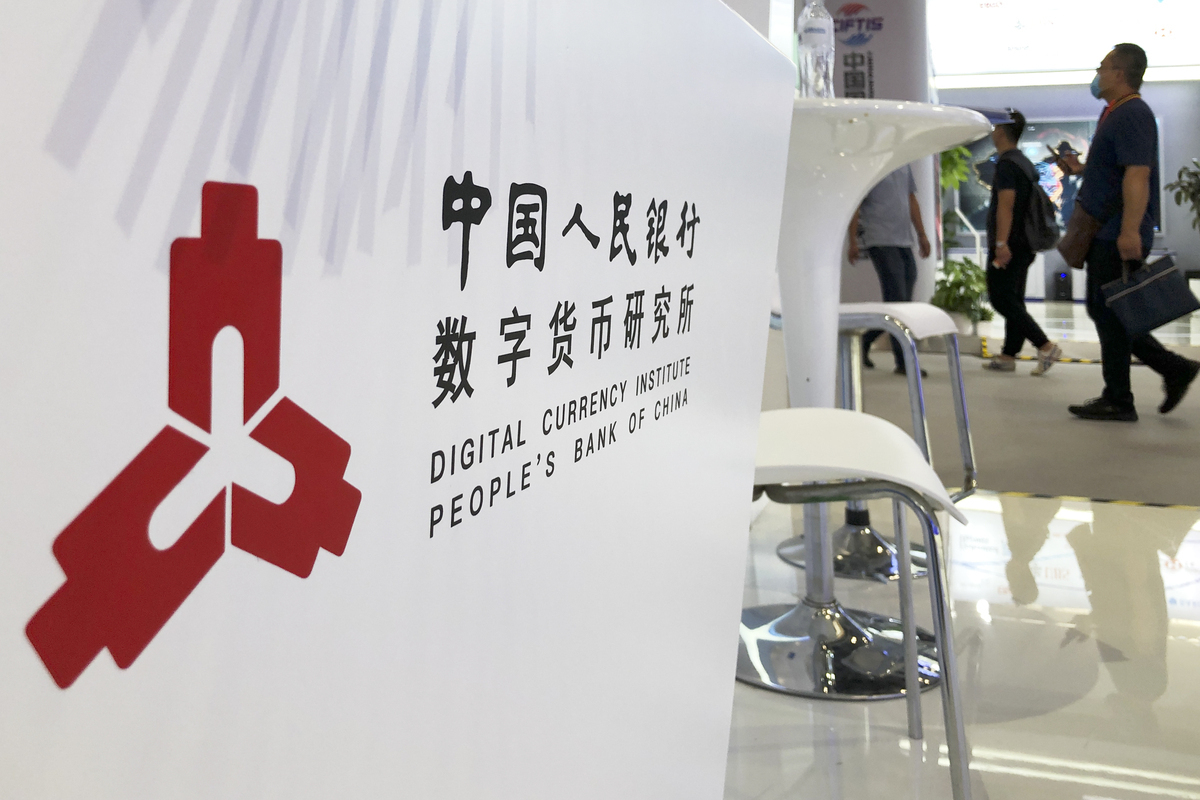E-CNY signals digitalization to 'connect everything'


Since the introduction of e-commerce scenarios in Suzhou, the online promotion of digital RMB has become increasingly diverse. According to the adaptability of different banks' digital wallets, it can be used in multiple internet scenarios offered by the e-commerce platforms such as Meituan, Didi, and Bilibili. The tests used different internet scenarios as the "diversion kerb" to increase users.
On the other hand, e-CNY wallets have various forms, which can be related to, but not fully relying on, smartphones and the internet. From the earliest mobile phone internal test application software to hardware wallets such as mobile phone SIM cards, visual cards, and wearable devices, e-CNY embodies the idea of "centralized issuance and market-based circulation".
It is jointly developed by the central bank and designated operating agencies, in the form of an inclusive ecosystem of wallets.
Regional cooperation can promote the formulation of rules for the global digital currency system. Compared with the steady and prudential advancement of the e-CNY domestically, which put the micro-payment service as a priority, for the external usage, the digital RMB will make bolder and more challenging attempts. It may also test the wholesale usage of the digital currency.
Recently, the PBOC Digital Research Institute issued a statement that it will jointly launch a multilateral central bank digital currency project, or the "Multiple Central Bank Digital Currency Bridge", with the Hong Kong Monetary Authority, the Bank of Thailand and the Central Bank of the United Arab Emirates.
The statement said the monetary authorities will explore capabilities pertaining to distributed ledger technology by developing a proof-of-concept prototype, to facilitate real-time cross-border foreign exchange payment-versus-payment transactions in a multi-jurisdictional context and on a 24/7 basis. It will also explore cases in cross-border trade using both domestic and foreign currencies.
In the "m-CBDC Bridge" program, participants may adopt different underlying structures and technical routes, thus, on how to achieve the simultaneous settlement of cross-border payments. This will face multiple challenges like laws and regulations and various business types in addition to technical issues.
In this field, China is exploring various possible solutions of e-CNY in the international environment with all partners, on the basis of seeking consensus.
It will promote the upgrading of global financial infrastructure and actively participate in making rules of a new cross-border payment system based on central bank digital currencies.
With the disclosure of patents involved and the gradual expansion of the e-CNY pilot programs, the embryonic form of the digital RMB has emerged, and the market's understanding of it will become clear. However, compared to other types of digital currencies, such as Libra and Bitcoin, the e-CNY is an ingenious experiment.
Entering the "digital RMB era" marks the starting point of digital migration, and we should focus on new advantages and new business formats.
During the two sessions this year, many members of the National Committee of the Chinese People's Political Consultative Conference submitted related proposals on "strengthening the protection of personal information", which also means that the digital economy has moved from focusing on improving productivity to reshaping production relations.
Digital technologies, such as 5G, AI, and cloud computing, move from "connecting people" to "connecting everything", driving the entire upgrading process of digital economy.
Blockchain, which effectively makes tampering impossible, achieves a high degree of trust in the mechanism, and becomes the institutional guarantee for the overall digital migration.
Under the innovation of digital technologies, we will see the birth of a large number of original and traceable digital assets, but the traditional credit currency system does not have the digital ability of docking and exchange.
Based on that, the e-CNY came into being. Its full traceability feature is coupled with the blockchain, and its programmability expands the space for the application and superposition of digital technologies.
It may reconstruct the exchange system of the digital economy and inspire a new generation of digital economy potential.
Cheng Shi is the chief economist and managing director of ICBC International. Gao Xinhong is a macroeconomic analyst at ICBC International.
The views don't necessarily reflect those of China Daily.




































